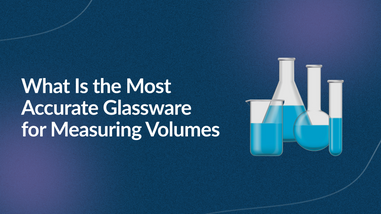- No products in the cart.
Centrifuge tubes are vessels that are filled with a substance that needs to be analyzed. They are developed to fit into a centrifuge, which is a piece of laboratory equipment that rotates samples at a high speed in order to cause separation of the materials within the sample. Many laboratory processes need the assistance of a centrifuge and the centrifuge tubes are designed to fit perfectly, keep the centrifuge balanced, and stay in place during the rotation.

Top Uses of Centrifuge Tubes
A variety of laboratory methods require the use of centrifuge and centrifuge tubes. Environmental labs use them at a high frequency due to the nature of their samples. The samples they obtain generally aren’t clean drinking water, but are filled with a variety of material.
1. Soil Samples
There are many extraction methods for soil analysis, which require the soil to be combined with water or a solvent. Thoroughly combining the soil with water can release the target analytes from the soil into the water which can be analyzed on an instrument. Often, mixing the soil and water leaves the solution murky and with too large of soil particles to be effectively analyzed. Putting the sample in a centrifuge tube and spinning it will pull all the soil material to the bottom of the tube. Then the water can be removed from the tube for analysis.
2. Process Samples
Customers in industries like the chemical or pharmaceutical industry have processes that combine water with other materials. Oil, fuel and other contaminants may be in the sample that they sent in for analysis. In order to analyze the water, the analyst must centrifuge the sample. This will cause a distinct separation between the water and other contaminants. Then the analyst can harvest the water with a pipet or syringe, leaving the other material behind.
3. Medical Labs
Centrifuge tubes are vital in separating components in medical labs. In blood samples they can separate the organelles from the cell and the sedimentation of cells and viruses. Centrifuging is a huge component of DNA or RNA extraction from a cell.
4. Preserving Your Instrumentation
By using the centrifuge to separate different layers of materials, you are increasing the longevity of your laboratory equipment. Gas chromatographs, mass spectrometers, and high-pressure liquid chromatography units are just a few of the instruments that really can be supported by centrifuging samples. The instruments inject a small volume of sample through a column, which separates target analytes, and are then identified by instrument software.
If additional contaminating material is injected into the instrument, you may be unable to identify any of the analytes in the sample. Contaminants can overshadow the analytes you’re looking for so you can’t see them. Sometimes the particle size of the contaminants is too large to pass through the column and can cause serious blockages and pressure surges.
Laboratory instrumentation is expensive and analysts must do their diligence when protecting them from harmful samples. Centrifuge tubes are a key to keeping your equipment healthy and thus your productivity high.
How to Use a Centrifuge Tube
It is quick and easy to use a centrifuge tube.
First determine the size of the tube that you need for your process. Some centrifuges are for small tubes that hold 15mL and others can hold 50mL. There are even microcentrifuge tubes for processes that use volumes as small as 0.5mL. Centrifuging is important for samples of all sizes!
Fill the tube with the sample and cap securely. Select the needed rotation speed and amount of time the samples need to spin for to ensure separation.
Place the centrifuge tubes on opposite sides of each other in the centrifuge. If you have an odd number of samples, fill a centrifuge tube with water and insert it as needed. This will keep the centrifuged balanced.
Make sure the lid of the centrifuge is securely closed and start the rotation. Collect samples when they are finished and place them in your centrifuge tube racks for transport.
The Importance of Balancing the Tubes in the Centrifuge
Centrifuge tubes experience a lot of pressure due to the high rotational speeds they must endure in the centrifuge. They can rotate at speeds from 500 to 1500rpm! Balancing the centrifuge is key for reaching those high rotational speeds. The bowl can be thrown off balance if the samples are unevenly distributed. This can cause the centrifuge to rock precariously, the centrifuge tubes to be ejected out, or even break the centrifuge all together.
The simple solution is to keep extra centrifuge tubes on hand and fill them will the same volume of water to match the tubes with sample volume in them. The vials all need to contain the same volume for the weight to be distributed evenly to ensure a safe and effective rotation. Those vials with water can be used repeatedly for balancing the centrifuge.
Whether you are a medical, biotech, pharma, environmental lab or something in between, Lab Pro Inc. can meet your centrifuge needs. We offer centrifuges and tubes in both large and micro volumes. We even offer refrigerated models if the samples need to maintain a certain temperature. We're happy to help answer any questions about which models would be right for your processes.
For over 40 years, Lab Pro Inc. has been committed to delivering the highest quality lab supplies such as centrifuge tubes, lab equipment, chemicals, and cleanroom PPE apparel to medical device and electronic manufacturing laboratories worldwide. To learn more, visit the biggest Lab Supply showroom in California, or contact us online or at 888-452-2776.












































